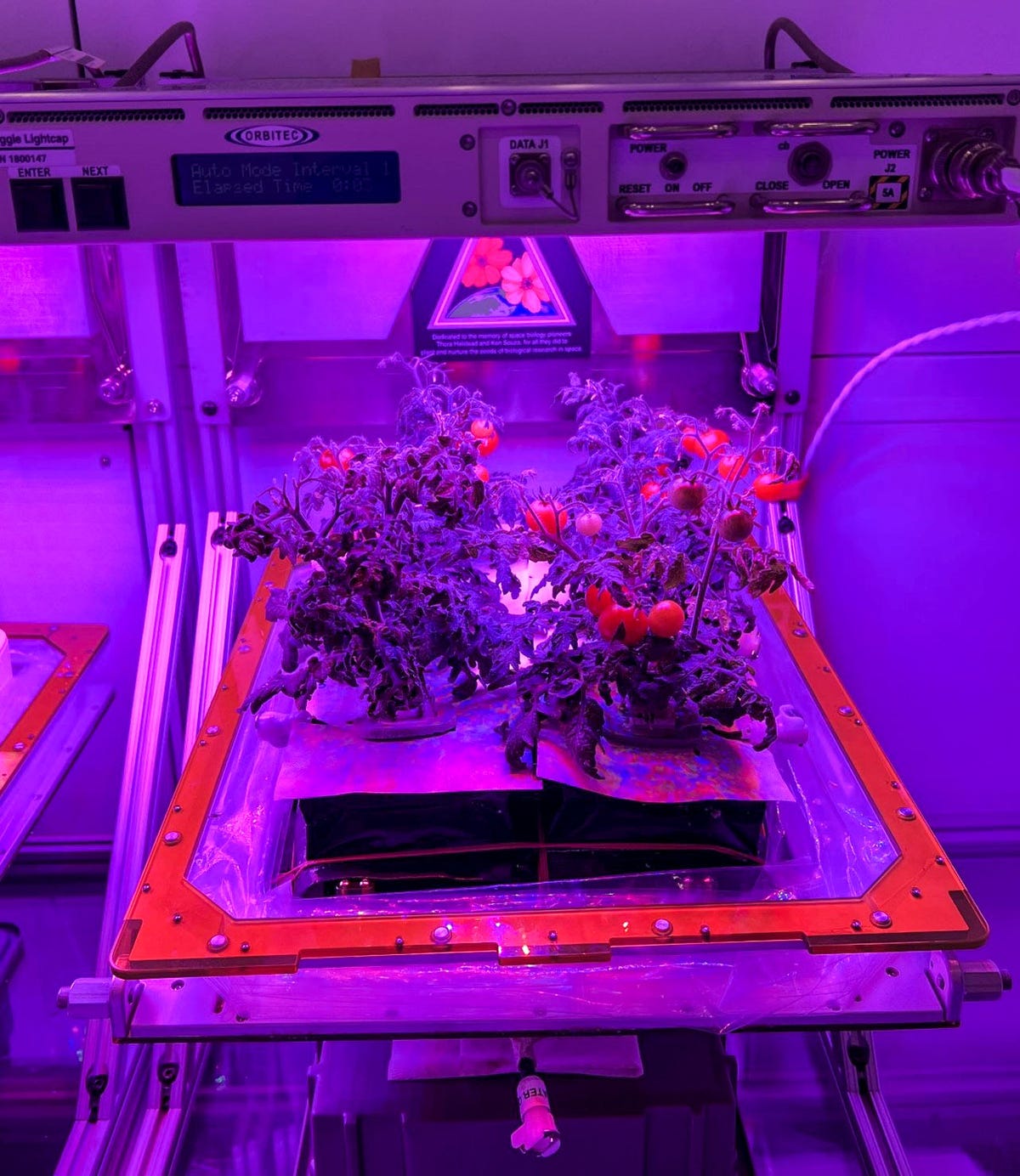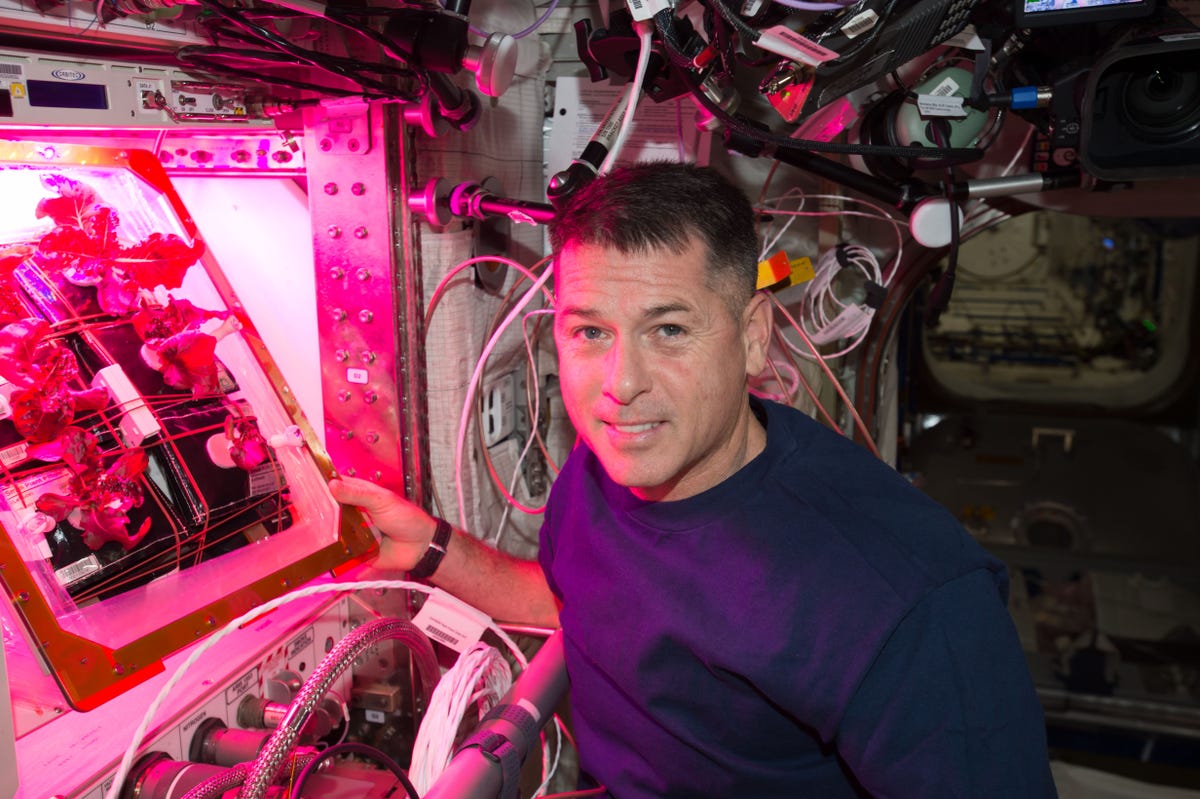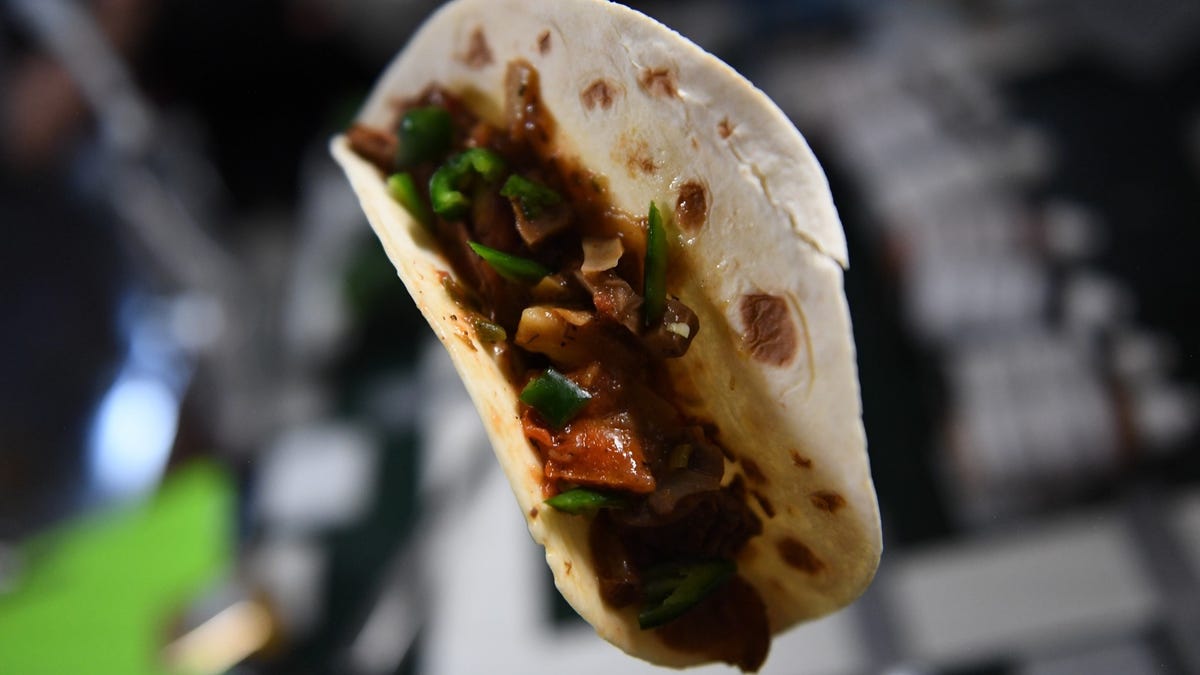
Since Thursday, flight engineer Nicole Mann has been installing the "Veg-05" study on the International Space Station, NASA said in a blog post. What's Veg-05, you ask?
Well, here's the long and complicated name of the Veg-05 study: The Pick-and-Eat Salad-Crop Productivity Nutritional Value, and Acceptability to Supplement the ISS Food System investigation.
Though at risk of oversimplification, I'd call this the agency's attempt to grow space tomatoes.
Basically, the goal is to grow dwarf tomato plants (essentially cherry tomatoes) under two different light quality treatments in space, and in one ground-based parallel study. On Nov. 26, the mission's precious tomato seeds were successfully sent up to the ISS via a SpaceX Falcon 9 rocket. Once some tomatoes have sprouted, the crew will analyze differences in fruit yield, nutritional composition and microbial levels, or amount of bacteria present.
To be clear, that analysis will be conducted with both scientific tools as well as personal surveys.
Yup, study team members plan on literally eating the tomatoes and rating flavor, texture, juiciness and other things we'd normally consider when shopping for homemade marinara ingredients.
I do wonder whether these space tomatoes, formally dubbed the Red Robin variety, will be more like a plump, on-the-vine situation, better suited for bruschetta, or more akin to those firm tomatoes great for long-simmered sauces and fresh salads.
Or maybe we can get both textures? Neither? This is why we need a cosmic tomato study.

A preflight view of 'Red Robin' dwarf tomatoes growing in Veggie hardware at the ground-based Kennedy Space Center.
Gioia MassaBut why do we need space salad?
In short, it seems NASA is gearing up for a hopeful future of deep space, Martian, and extra-long lunar astronaut expeditions.
I mean, Artemis I is technically already paving the way for moon bases, habitats and internet connectivity, which will eventually set the stage for the agency's dream of taking humans to Mars. We even have a prototype "holoported" medicine concept in the works to benefit deep space exploration, thanks to Microsoft's HoloLens.
And the fact of the matter is that fresh food will ultimately be more nutritious -- and delicious -- for anyone venturing into the universe's distant embrace. It's also quite difficult to take Earth food to astronauts with resupply missions, a complex and expensive option that wouldn't be possible at all for those headed on long-term journeys one day.
"The packaged diet currently used by crews in low-Earth orbit works well and has supported an uninterrupted human presence in space since Nov. 2, 2000," NASA wrote in an overview of the study. "However, it relies on frequent resupply missions. During a two- or three-year mission to Mars, the vitamins and quality of packaged food would degrade over time. Supplementation with fresh, edible crops will provide necessary nutrients while also enhancing dietary variety."
"Anecdotal evidence," the agency continues, "also supports the potential for psychological benefits for astronauts, rooted in the enjoyment of eating and caring for plants."
With these reasons in mind, there's actually a whole investigation surrounding how to grow natural crops on the ISS. Veg-05 is only one piece of the puzzle.

NASA astronaut Shane Kimbrough growing lettuce in the contraption, named Veggie, on the International Space Station.
NASAThe power of the tomato
NASA's latest tomato queries are born from the Veg-04 study, which dealt with generating mizuna mustard leafy greens. Veg-04 followed Veg-03, which made cabbage, kale, romaine and lettuce prototypes; and Veg-03 came after Veg-01, which was the first exploration of romaine. Veg-02, if you were wondering, also was focused on romaine -- yeah, space romaine is set to surpass Earth romaine at this rate -- but that time, the leaves weren't meant for human consumption.
Altogether, NASA's spacey salad endeavor is called "Veggie," which succinctly stands for The Vegetable Production System. That's the name of the plant growth unit on the ISS, where all the magic happens.
Plus, Veggie studies transcend the "Veg" subcategories. For instance, there were a few nonedible experiments in play several years ago that produced lentils, radishes and even algae. Last year, the space station crew chowed down on space tacos, too, because astronauts managed to harvest some piquant green chile. (Those tacos, though, weren't officially part of Veggie).

A taco on the ISS made with Hatch chile peppers.
NASA/Megan McArthurDown the line, space crops may, fascinatingly, also turn out to surpass the nutritional value of Earth crops. Earlier this year, as an example, scientists presented their blueprint for what's called transgenic lettuce, growable in outer space.
This special kind of lettuce is similar to its normal counterpart, except it's genetically engineered to prevent bone loss, a medical complication that affects people in zero-gravity. Normally, astronauts have to inject themselves with substances that help ease the issue, but wouldn't it just be better to eat a bone-loss-preventing salad? Perhaps there'll be a way one day to modify all of Veggie's fresh ingredients similarly, too.
Who knew salad could be so powerful?









 Add Category
Add Category